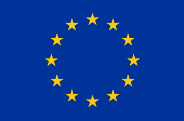
Safe non-food consumer Products in the EU and China
CE marking is the manufacturer’s indication that their product is in conformity with the applicable requirements set out in Community harmonisation legislation providing for its affixing and that they take responsibility for the conformity of the product. (Definition from Regulation (EC) 765/2008)
European consumers expect all products on sale on the EU market to be safe and the role of the CE mark is to signal to the consumer that the product complies with all EU rules, including the safety requirements. Not all products require the CE mark, but all products must be safe and must comply with all applicable legislation.
Products that must be CE marked include the following:
There are, however, some products that do not require CE marking and it would actually be illegal to use the CE mark on these products, for example:
The CE mark is a self-declaration of the manufacturer and is not an approval from an authority. The manufacturer is responsible for applying the CE mark, but certain steps must be taken before the CE mark can be put on a product:
1) The manufacturer must design and manufacture the product, so it is safe and complies with all relevant EU legislation. This includes production control and risk assessment.
2) The manufacturer must compile a technical documentation that demonstrates that the product is safe and compliant.
3) The manufacturer must draw up and sign a declaration of conformity.
4) The manufacturer be permitted to affix the CE mark to the product, where it is required. CE marks can be printed using the template in Regulation 765/2008, Annex II.
Learn more about CE marking on the European Commission’s website.
Regulation 765/2008 contains details about the CE mark in Annex II and its use.
Above is an example of the CE mark and it is available in different formats to download from the European Commission website.
Learn more about Regulation 765/2008 which contains a copy of the CE mark in Annex II.
You can learn more about this subject in the case studies section.

This website was created and maintained with the financial support of the European Union. Its contents are the sole responsibility of SPEAC project and do not necessarily reflect the views of the European Union.